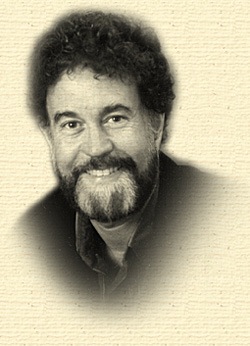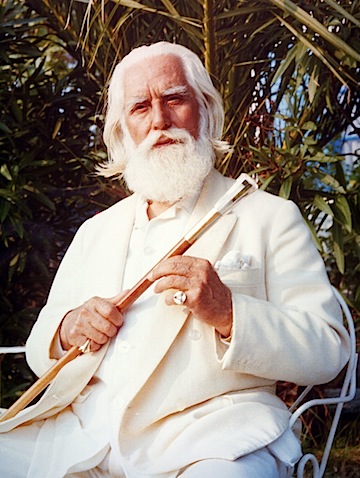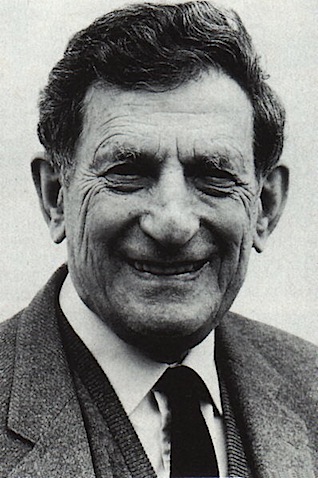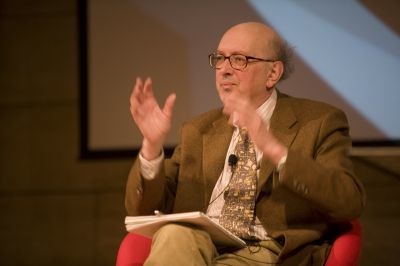Genuine Communion

“When someone disagrees with me, I do not have to immediately start revising what I just said. People don’t want me to always agree with them. They can sense this is phony. They can sense I am trying to control them: I am agreeing with them to make them like me. They feel; ‘I don’t want to exist to like you. I DON’T exist to like you.”
–Hugh Prather (American Writer, Minister, Spiritually-oriented Counselor and Writer in the Field of Personal Growth and Relationships, 1938-2010)

“Notes to Myself: My Struggle to Become a Person” (Hugh Prather)
Exchange Is The Law of Life

“Exchange is the law of life, and to exchange means to give and receive. Understanding this law allows us to better understand the processes of the spiritual life, such as communion, for example. To commune means to make exchanges.”
–Omraam Mikhaël Aïvanhov (Bulgarian Spiritual Master, 1900-1986)
Meaning and Communication

“In communication, meaning unfolds into the whole community and unfolds from the community into each person. Thus, there is an internal relationship of human beings to each other, and to society as a whole. The explicate form of all this is the structure of society, and the implicate form is the content of the culture, which extends into the consciousness of each person.”
–David Bohm (American-born Theoretical Physicist and Philosopher, 1917-1992) and F. David Peat (English Physicist and Writer, 1938)
A Shocking Study

I have been teaching medical students and doctors since the 1970s. But there have recently been times when I have despaired about the way in which so many young doctors no longer engage in common courtesies with their patients.
I just spoke to someone who had visited a new family physician. She was fresh out of her residency, and her residency director has something to answer for. She did not make eye contact or shake hands, and could not remember the person’s name. When the patient extended her hand the doctor became confused because she was focused on her laptop.
I know that I can be accused of being old fashioned, but that shocked me, as did a recent report that medical students at a highly rated school are going to be getting classes in empathy and talking to people. This was announced with great fanfare. My question: why on earth do intelligent people need to be taught how to communicate? And if they have a problem in that area, first, how did they get accepted into that excellent medical school? During the years that I was involved in medical school admissions, I would have not have given a high score to someone with poor interpersonal skills. Second, why are the students’ teachers not modeling communication skills?
So first I heard about the extraordinary manner of the primary care physician. Then it was the self-congratulation that accompanied the announcement that students were going to be taught how to speak to people.
And then this.
A study in the Archives of Internal Medicine that left me shaking my head.
The researchers from Northwestern University’s Feinberg School of Medicine found that Doctors do not address patients by name in half of first-time visits, even though nearly all patients want this common courtesy.
There has been research on what doctors should wear but little about how they should greet patients or what patients actually expect. Most good physicians have relied upon empathy and common sense to guide them. This study focused on finding out what patients think is an appropriate greeting. He also analyzed a sample of interactions between doctors and patients during first-time visits.
The researchers collected information from 415 phone surveys in which people were asked how they expect to be greeted by a doctor. Researchers also viewed and analyzed more than 120 videos of primary care visits in which the doctor and patient met for the first time.
They found that 78 percent of survey respondents wanted the physician to shake their hands. Nearly all patients wanted to be greeted by name, including 50 percent by their first name, 17 percent by their last name and 24 percent by both their first and last name. Most patients, about 56 percent, wanted physicians to introduce themselves using first and last names, while 33 percent expected last name and 7 percent expected first name.
The researchers found a striking difference between expectations voiced in the phone surveys and the actual interaction between doctors and patients in the videos. While 83 percent of doctors shook hands in the videos, only half addressed the patient by name.
Obviously everyone has their own communication style, but the researchers recommend that doctors should incorporate a greeting strategy that uses first and last names for both doctor and patient. Doctors also should plan to shake a patient’s hand, but need to be sensitive to body language or other nonverbal cues that may indicate whether a patient does not want to or is not physically able to reciprocate or respond.
How we use names or handshakes will also change over time.
Why does this business of doctor-patient communication matter so much?
It is not simply a point of courtesy, though that would not go amiss. The real issue is that relationships are the heart of healing. Relationships might not be so important to the person performing some technical service, but for healing they are essential. If I need to get my car fixed, it is nice if the mechanic wants to talk, but it is not essential. He can treat my car as the hunk of metal and moving parts that it is.
But healing is different from treatment. Healing demands a relationship, intention and a shared vision. An interaction that will create something that is greater than the sum of the parts. A polite, personal greeting creates a first impression that can affect the chance of developing a therapeutic relationship. Ignoring the normal rules of social interaction sets the tone for everything that comes afterwards. It is respectful to use a person’s name and on a purely practical level, helps ensure that you are seeing the right person! More than once I have been given the wrong chart before meeting a person for the first time.
Interestingly, accrediting organization quite rightly emphasize that communication is a critical skill for physicians. Sadly many medical schools put such a huge emphasis on academic attainments that some people enter the medical profession without natural communication skills, and their training does little to help them get better at it. But this skill may not come naturally to all doctors, so it’s important to offer guidance on different aspects of communication such as greetings
My students will tell you something that I have said a thousand times: “You have spent a lifetime developing people skills. You have learned how to talk to Aunt Mabel, how to feel when you are in a dangerous environment and how to deal with that guy at the bar who is becoming annoying. These are very valuable skills. Why did you check them at the door on the day that you entered medical school?”
One of my mentors once lamented, saying that 90% of medical students would have been better served by a technical college than a medical school, because they had no curiosity, no desire to move the field forward and no wish to engage with the people who came to see them. And that was in England, where there is socialized medicine. I did not want him to be right, but he probably was. In fact he was right about a great many things, which is why he was nominated for the Nobel Prize in Medicine on three occasions.
If medical schools want to turn out healers rather than technicians, then it is clear that medical students and doctors have to be helped to learn basic communication skills.
One of the many reasons that so many holistic therapists and practitioners of Integrated Medicine are popular is that they do understand the importance of good communication. Not because of research, but because that is their natural way of being.
What have your interactions with doctors been like?
How do you like them to greet you?
“True communication is remembering that everything is relationship — that, regardless of the appearance, no one stands alone.”
–Hugh Prather (American Spiritually-oriented Counselor and Writer in the Field of Personal Growth and Relationships)
“Once a human being has arrived on this earth, communication is the largest single factor determining what kinds of relationships he makes with others and what happens to him in the world about him.”
–Virginia Satir (American Family Therapist, 1916-1988)
The Song of the Whales

I suppose that it has something to do when I grew up, but I’ve always been fascinated by animal communications in general and the amazing songs of the whales in general.
A few years ago I was speaking at a conference in Maui, and I stopped speaking and took the assembled throng outside because some migrating whales were coming in very close to shore. Our wait as not in vain: I saw something that I’d only ever seen on documentaries: two adult whales and their calf leaping out of the water in harmony. Later that day someone took me out beyond the surf and had me swim underwater. The whale song was crystal clear, even though some of the whales were now miles away.
A few months ago I wrote about the data suggesting that dolphins call each other by name. Web Mistress Carol has just sent me a report of some research that was published in January by a group from the Scripps Institute of Oceanography in the journal Marine Ecology Progress Series.
The scientists used harmless tags suctioned to the whales’ bodies, to track the whales and found that as they feed they send out calls to let each other know where they are. Each group employs a different sound.
The noises play a similarly important role during mating season when males sing long, low-pitched songs to indicate their reproductive fitness to females. Females select mates based on size and estimate that by evaluating males’ songs: Larger males can take in more air and hold notes longer.
A related study, also by Scripps researchers, found that there are distinct “dialects” of whale-speak in different regions of the ocean.
The scientists used acoustic recordings to delineate nine population regions worldwide. They found the whales weren’t evenly distributed, though: Populations using a “Type 1” call, for example, live within a narrow band of ocean hugging the North American coast, while whales that use a “Type 4” call are spread over a large swath of the Northern Pacific Ocean.
The second study was published in a recent issue of the Journal of Cetacean Research Management.
The scientists say the dialect findings could help guide conservation efforts for blue whales, whose numbers dwindled to dangerously low levels before whaling moratoria were enacted: There were once an estimated 200,000 to 300,000 in the Southern Hemisphere, but today that number is closer to 1,000.
Here is a terrific video (just bear with the commercial at the beginning) and an audio file of whale song: Audio: Hear Whales Sing
I would also like to pay tribute to the Scripps Institute for making the entire article open access.
Of Horses and Hearts

I live on a horse farm, so I see the interactions between horses and between horses and humans almost every day. Horses are extraordinarily sensitive creatures with their own sets of emotions and highly developed sense of propriety. They are also very good barometers for the emotional states of humans. We could not work out why one of the horses at another farm was consistently bratty with one particular rider, until we discovered that she was high on ecstasy. Her “energy” was a mess and it totally confused the horse.
On the other hand, horses are often used therapeutically with emotionally and mentally ill and handicapped children and adults. My old horse – Mr. Black – was a perfect therapy horse: nothing ever fazed him.
There is now some more research demonstrating one of the possible mechanisms by which horses may be able to pick up on a rider’s emotional states.
I have a couple of times mentioned some of the work being done at the Institute of HeartMath in California.
Some of their work is controversial, but most has been quite convincing.
I have for several years now been interested in the phenomenon of Heart Rate Variability (HRV). As the name implies, it is a measurement of the beat-to-beat variation in the heart’s rate. Alteration (primarily reductions) of HRV has been reported to be associated with various pathologic conditions like hypertension, hemorrhagic shock, and septic shock. It has found its role as a predictor of mortality after an acute myocardial infarction. It may also be disturbed in major depressive disorder.
I knew about it from the days that I worked at the National Heart Hospital in London, but Roger Callahan – the discover of Thought Field Therapy (TFT) – has been able to show that TFT is one of the few therapies that can normalize it. We also discussed it in the context of the vagal nerve and compassion.
From a pilot study by the Institute and Dr. Ellen Gehrke from Alliant University it appears that a horse’s heart rhythms reflect their emotional state and can respond to the emotional state of a nearby human. When in contact, a horse’s heart rate may mirror a human’s emotions, implying a close unspoken form of communication between the two.
The study took place at Dr. Gehrke’s ranch in San Diego, where electrocardiogram (ECG) recorders were placed on her and also on four of her horses. All five were monitored during a 24-hour period in which the horses were under a variety of normal conditions and activities such as eating, grooming or being alone. Measurements were also done while they were being ridden and accompanied by Dr. Gehrke.
The ECG recorders projected increased coherent HRV patterns for the horses during times of close, calm contact between them and Dr. Gehrke. Coherent HRV patterns have been shown to be the result of positive emotions and facilitate brain function.
Dr. Gehrke said, “Horses receive information from body language and give feedback. They don’t think very much, they feel. They are very emotional and honest. They also have a powerful impact on your sense of self and ability to lead.”
I don’t think that cardiac coherence is the whole story. They also respond to micro-movements – small movements of the legs, arms and trunk that are all but imperceptible to humans – and we have seen many of them sense events at long range. I travel a great deal and come home at odd times. But several witnesses saw Mr. Black start to become very excited 20-30 minutes before I would arrive home. In England, Rupert Sheldrake has amassed a considerable body of evidence to support those observations.
Nonetheless, this is very important research and I shall be very interested to see the final version once it has been subject to peer review.
“There is something about the outside of a horse that is good for the inside of a man.”
–Sir Winston Churchill (English Statesman, British Prime Minister, 1940-1945 and 1951-1955, and, in 1953, Winner of the Nobel Prize in Literature, 1874-1965)
“A man on a horse is spiritually as well as physically bigger than a man on foot.”
–John Steinbeck (American Writer and, in 1962, Winner of the Nobel Prize in Literature, 1902-1968)
“Wherever man has left his footprint in the long ascent from barbarism to civilization we will find the hoofprint of the horse beside it.”
–John Moore (American Man of Letters and Former Archivist and Librarian for the State of Tennessee, 1858-1929)
“I’d rather have a goddam horse. A horse is at least human, for God’s sake.”
–J.D. Salinger (American Writer, Student of Advaita Vedanta and Recluse, 1919-)
And finally:
“In my opinion, a horse is the animal to have. Eleven-hundred pounds of raw muscle, power, grace, and sweat between your legs – it’s something you just can’t get from a pet hamster!”
–Unknown Author
Communicating About Complementary and Alternative Medicine
Two of the key points about Integrated Medicine are transparency and integration of different approaches.
It is true to say that all healing is ultimately self-healing, but at the heart of healing lies relationship: how we communicate with every part of ourselves, with other people and with our health care providers. At the most mundane level, there is published data that if a health care provider has a good relationship with the person coming to them for help, the chance that the person will follow through on a treatment plan is four times higher than if they meet a health care provider who just grunts at them.
There is also a magic that can happen in strong, dynamic relationships based on partnership rather than dominance: one of the themes of Healing, Meaning and Purpose.
It worried, but did not surprise me to see a study released today.
Most Americans age 50 and older use complementary and alternative medicine (CAM), such as supplements, herbal products or acupuncture. The trouble is that – according to a survey conducted by AARP and the National Center for Complementary and Alternative Medicine – they often do not tell their doctors or nurses.
It is very much in person’s best interests to tell their doctor about the CAMs that they are taking because some unorthodox medicines may interfere with over-the-counter medications, prescription drugs, or other conventional medical approaches. See here for an example of some herbal remedies and supplements that may interact with psychotropic medicines.
As the report says, "Communication between patients and physicians about CAM and conventional therapies is vital to ensuring safe, integrated use of all health care approaches."
It goes on to say something that we have been preaching for years: an open dialog "allows patients and physicians the opportunity to identify CAM practices that might be beneficial and also minimizes risks to a patient from potential therapy interactions."
Among a total of 1,559 individuals age 50 and older surveyed in the spring of 2006, 63 percent reported having used one or more CAM therapies.
According to the survey – which can be found here – people between the ages of 50 and 59 are the most likely to report CAM use.
Forty-five percent of CAM enthusiasts used massage therapy, chiropractic manipulation or other bodywork; 42 percent used herbal or dietary supplements; 15 percent used mind/body practices, including hypnosis and meditation; 14 percent used naturopathy, acupuncture, or homeopathy; and 10 percent had tried energy therapies.
Sixty-six percent of CAM users said they did so to treat a specific health problem; 65 percent for overall wellness; 45 percent to supplement conventional medicine; and 42 percent to prevent illness.
Sixty-nine percent of those who reported using CAM had not discussed it with a doctor.
The intersting qustion is, "Why?"
Forty-two percent said because their doctor never asked; 30 percent said they did not know they should; 19 percent felt there was not enough time during the office visit; 17 percent didn’t think the doctor would know about the topic; and 12 percent thought the doctor would be dismissive or tell them not to use CAM.
Women were more likely than men to have discussed CAM use with their doctor (26 percent vs 16 percent) and those younger than age 65 were more likely to discuss CAM use than were older individuals.
The report concludes that "patients need to mention CAM use to their physicians and physicians need to ask about it."
Life is Information at Work
“Information is "a difference that makes a difference.”
–Gregory Bateson (English Anthropologist, Social Scientist, Linguist, Cybernetician and Writer, 1904-1980)
Much of the work in which we’ve been engaged needs us to look very hard at what is life? Is it simply a collection of biochemical reactions glowing in the dark, or is it something more complex, laden in meaning and purpose. This is not an academic exercise: unless and until we can better understand the fundamental processes of life, it is difficult to advance the practice of medicine and the processes of health and wellness.
A fundamental tenet of Healing, Meaning and Purpose is that we live in a non-dual Universe, of which consciousness, information and energy are the primary manifestations and principles. I present a great deal of solid scientific material that you can use immediately. It’s all based on the fundamental concept that illness is caused by degradation in the storehouse of information that sustains the body.
Comprehensive treatment and persistent robust physical, psychological, social, subtle and spiritual health is rooted in clear, harmonious, integrated information. And that is why physical treatments – sometimes including medications – may be an essential component of helping someone get well, but is nonetheless just one piece of the puzzle. It is essential also to ensure that the information and communication between each aspect of a person and his or her environment are also clear, harmonious and integrated. Without those other pieces, we may be doing no more than putting a band aid on a problem.
Valentino Braitenberg the former director at the Max Planck Institute for Biological Cybernetics in Tübingen, Germany, has always had some interesting things to say. He is a truly original thinker who’s also, IMHO, a fine human being.
I recently came across this in his last book, Das Bild der Welt im Kopf: Eine Naturgeschichte des Geistes, published in 2003 by LIT Verlag, Munster:
“Living organisms contain information, are the result of information, pass on information, and information made flesh in the conditions that their environmental niches impose for survival. To read this information is to recognize the very essence of a living organism.”
I think that this is the most succinct summary of what is to be a living organism. Yes, of course, you are made up of atoms and molecules. But the key point is that you are maintained by a constantly flowing river of information. Without it your body, your mind, your relationships and your spiritual essence would cease to flow.
Any treatment worth its salt will always be directed toward correcting and modulating and integrating this flow of information.
Anything less, and we are simply moving around the deckchairs on the Titanic.
“The original root of the word "information" is the Latin word informare, which means to fashion, shape, or create, to give form to. Information is an idea that has been given a form, such as the spoken or written word. It is a means of representing an image or thought so that it can be communicated from one mind to another rather than worrying about all the information afloat in the world, we must ask ourselves what matters to us, what do we want to know. It’s having ideas and learning to deal with issues that is important, not accumulating lots and lots of data.”
–Theodore Roszak (American Social Thinker, Critic and Writer, 1933-)
“Man must go back to nature for information.”
–Thomas Paine (English-born American Political Theorist and Writer, 1737-1809)
Integrated Medicine and Cancer
There’s a very interesting and important piece of research from the School of Social Work at the University of South Florida in Tampa.
The title of the paper is “Patient-physician communication regarding use of complementary therapies during cancer treatment,” and it discusses something with which I’ve been very involved for many years.
The paper uses the terms “complementary and alternative medicine,” though the same principles apply to the far more sophisticated and comprehensive approaches of Integrated Medicine.
Studies from the United Kingdom, Germany, Holland, France and the United States have estimated that as many as 80% of adult cancer patients use at least one form of Complementary and Alternative Medicine (CAM) during or after conventional treatment. I’ve discussed before the pitfalls of trying to use unorthodox medicine in place of conventional medicine. In Europe some of the practices of Integrated Medicine, particularly acupuncture, homeopathy and massage, are used to help people cope with the rigors of chemotherapy and radiation therapy, rather than to treat the tumors themselves. Many people claim that they can use homeopathy or some herbal remedies as the sole treatment for different types of cancer. But I won’t endorse them unless they can show me some data.
We already know that patients frequently do not tell their oncologists about their use of unorthodox medicines and physicians consistently underestimate the numbers of their patients using them. The purpose of this study was to assess newly diagnosed cancer patients’ and oncologists’ communications with regard to unorthodox medicines. They looked at people with two types of cancer: 106 had breast cancer and 82 had prostate cancer. All the patients in the study were receiving regular conventional medical treatment.
In line with previous research, 84% reported that they were using at least one unorthodox therapy. The most popular were exercise, vitamins, prayer, and nutritional supplements.
But here was the surprise for the investigators: The oncologists surveyed were generally enthusiastic and supportive of patients’ use of these therapies. In addition to those therapies popular with patients, at least half the physicians supported massage, journal writing, support groups, acupuncture, biofeedback, and art therapy.
This was no surprise to me at all. I spent most of my clinical career in tertiary referral centers, and I’ve worked with the best of the best. The vast majority was extremely supportive of anything that would help. Every one of them was a skeptic who would say, “show me.” But once they had been shown, they would be very helpful. After all, who doesn’t want to help people get better?
It has always been so noticeable that the biggest critics, not skeptics, but critics, have been people who were less secure. Often not the “Best of the best,” they would carp and complain that “we don’t do things that way,” and “I don’t see how it could work, so I’m sure that it doesn’t.”
What this new piece of research showed was that discussions the use of unorthodox medicine were relatively rare and were most likely to be initiated by the patients. When the topic was discussed, both patients and doctors said that it usually enhanced their relationship.
What do I take away from this study?
If you, a friend or loved one has cancer, or any other type of illness for that matter, consider using something else in addition to your regular medical care. Not as a replacement, but in addition. The regular treatment will be helping the physical side of the illness, but you also need help with the psychological, social, subtle and spiritual aspects of what is going on in your life.
And guess what? Chances are that if you have a good oncologist, or any other type of conventional clinician working with you, he or she will probably be very supportive of anything that you do.
I once said at a very large meeting that if I needed to put a bone through my nose and do a dance to get someone better, I’d do it.
And I’m not the only one.
What Integrated Medicine does is to put all the cards on the table from the very beginning. We tell people that we are going to be helping guide them toward physical, psychological, social, subtle and spiritual health. They need to be able to derive meaning and purpose from what’s happened to them, rather than just cussing at their misfortune.
And then using the experience to grow as individuals and to help others.
The Integrated Practitioner will also be working with the way in which this person’s challenge is changing them. If a practitioner is not changed by the person in front of him or her, they are working only as a technician and not as a healer.
There’s nothing wrong with that, but everyone needs to be clear about what the practitioner is bringing to the table, and what their expectation is for the person who has come to see them with a problem.
For now, if you are not working with an Integrated Practitioner, do tell your health care provider if your are doing something else to help yourself.
Chances are that he or she will be very supportive.
Clarity of Communication
One of the major reasons for the failure of relationships or of businesses is a failure to communicate clearly. There are also powerful reasons for thinking that much ill health is rooted in “blockages:” inadequate communication between your body, your mind, your emotions, subtle systems and spirituality.
Any communication consists of ten essential components:
- The integrity and mental state of the sender
- The intent of the sender
- The expectation of the sender
- The information
- The medium
- The context
- The receiver
- The mental state of the receiver
- The reaction or response of the receiver
- The meta-text and meta-communication of the exchange
Naturally, in a healthy communication, everyone involved takes turns being the sender and the receiver, and this interaction between you creates the overall message. I must be very clear that I’m not just talking about verbal communication, but also physical and intimate interactions, business and family discourses.
I’d also like to take the whole notion of communication a step further: meaningful communication needs for us to be consciously aware of the interaction, and we should see it not just as an exchange of information, but of energy. A charismatic individual may communicate a lot more than mere words and his or her impact may last long after the words have been forgotten. On the other hand, there is actually a technical term – phatic communion – for empty language that is purely used for social lubrication: “How are you?” “You’re welcome,” “Have a nice day.”
It really is important to be aware of all of these components of communication. A problem in any one of them can make a mess of any attempt for people to connect. Too often I see people think only of the sender, the message and the recipient, without realizing that it is the other aspects of communication that are the keys to success or failure. This is often very important in therapy: people may ruminate on something said to them, when they should be considering the context of whatever was said.
Meta-text and meta-communication refer to the whole spectrum of other components of our interactions that stretch beyond the message itself. These include the types of language that we use as well as prosodic cues. And if people are in close proximity, body language and gesture. You may well know that it is possible to tell a great deal about someone’s intentions by studying changes in the tone of their facial muscles, changes in the color of their skin and the directions I which they move their eyes when speaking. How we use certain words to fill in our communication can be as important as the main body of a communication. Something that we do all the time is to try to understand the underlying meaning or meta-text, that is often quite different form the actual words being spoken.
Whether dealing with an individual in therapy or a business that wants to perform better, there is a series of critical questions that will uncover communication problems:
- Do you have any communication problems?
- Who is responsible for it?
- Is there a disconnection between the mental state of any message sender and the message itself?
- Does the sender have a clear purpose in communicating?
- Are people able to understand the sender? (T.E. Lawrence (of Arabia fame) was said to have one of the largest vocabularies at the University of Oxford. So large that many people didn’t have a clue what he was talking about!)
- Is information being communicated appropriately?
- Is the environment conducive to communication?
- What is interfering with communication?
- How long has this been a problem?
- Why has the problem not been solved?
If there is a communication problem, consider starting from scratch:
- Any communication contains information and energy: are they both clear and pure?
- Is there congruence between what is being communicated and the intent of the communicator?
- Is there a culture of integrity in communications?
- Are people striving for the greater good or personal aggrandizement?
- What people, policies or procedures are interfering with communication?
- How are communications becoming degraded?
- What and who’s emotions are interfering with the informatyion and the energy of any communications?
- What might lead to the misunderstanding of a message?
- What systems are in place to ensure that communications are being received and understood correctly?
- What system of questioning is in place?
Once we understand each of the phases of communication, and that it is a dynamic exchange of energy and not just information transfer. And that ANY message or communication is subject to degradation, and that there are ways to check for and correct it, you are well on your way to abolishing many of the problems that can wreck relationships, capsize companies and ruin a therapeutic alliance.
“Once a human being has arrived on this earth, communication is the largest single factor determining what kinds of relationships he makes with others and what happens to him in the world about him.”
— Virginia Satir (American Family Therapist, 1916-1988)
“Skill in the art of communication is crucial to a leader’s success. He can accomplish nothing unless he can communicate effectively.”
— Norman Allen (American Playwright, Recipient of a Charles MacArthur Award for Outstanding New Play)
“A world community can exist only with world communication, which means something more than extensive shortwave facilities scattered about the globe. It means common understanding, a common tradition, common ideas, and common ideals.”
–Robert M. Hutchins (American Educator, and, from 1929-1945, President of the University of Chicago, 1899-1977)








